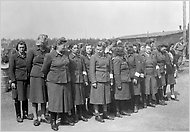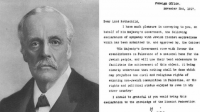
Links
Sheba Medical Centre
Melanie Phillips
Shariah Finance Watch
Australian Islamist Monitor - MultiFaith
West Australian Friends of Israel
Why Israel is at war
Lozowick Blog
NeoZionoid The NeoZionoiZeoN blog
Blank pages of the age
Silent Runnings
Jewish Issues watchdog
Discover more about Israel advocacy
Zionists the creation of Israel
Dissecting the Left
Paula says
Perspectives on Israel - Zionists
Zionism & Israel Information Center
Zionism educational seminars
Christian dhimmitude
Forum on Mideast
Israel Blog - documents terror war against Israelis
Zionism on the web
RECOMMENDED: newsback News discussion community
RSS Feed software from CarP
International law, Arab-Israeli conflict
Think-Israel
The Big Lies
Shmloozing with terrorists
IDF ON YOUTUBE
Israel's contributions to the world
MEMRI
Mark Durie Blog
The latest good news from Israel...new inventions, cures, advances.
support defenders of Israel
The Gaza War 2014
The 2014 Gaza Conflict Factual and Legal Aspects
To get maximum benefit from the ICJS website Register now. Select the topics which interest you.
Women’s role in holocaust may exceed old notions
JERUSALEM — Amid the horrors of the Holocaust, the atrocities perpetrated by a few brutal women have always stood out, like aberrations of nature.

There were notorious camp guards like Ilse Koch and Irma Grese. And lesser known killers like Erna Petri, the wife of an SS officer and a mother who was convicted of shooting to death six Jewish children in Nazi-occupied Poland; or Johanna Altvater Zelle, a German secretary accused of child murder in the Volodymyr-Volynskyy ghetto in Nazi-occupied Ukraine.
The Nazi killing machine was undoubtedly a male-dominated affair. But according to new research, the participation of German women in the genocide, as perpetrators, accomplices or passive witnesses, was far greater than previously thought.
The researcher, Wendy Lower, an American historian now living in Munich, has drawn attention to the number of seemingly ordinary German women who willingly went out to the Nazi-occupied eastern territories as part of the war effort, to areas where genocide was openly occurring.
“Thousands would be a conservative estimate,” Ms. Lower said in an interview in Jerusalem last week.
While most did not bloody their own hands, the acts of those who did seemed all the more perverse because they operated outside the concentration camp system, on their own initiative.
Ms. Lower’s findings shed new light on the Holocaust from a gender perspective, according to experts, and have further underlined the importance of the role of the lower echelons in the Nazi killing apparatus.
“In the dominant literature on perpetrators, you won’t find women mentioned,” said Dan Michman, the chief historian at Yad Vashem, the Holocaust Martyrs’ and Heroes’ Remembrance Authority in Jerusalem.
Ms. Lower, 45, presented her work for the first time at this summer’s workshop at Yad Vashem’s International Institute for Holocaust Research. She has been trying to decipher what motivated these women to commit such crimes.
“They challenge so deeply our notion” of what constitutes normal female behavior, she said. But the Nazi system, she added, “turned everything on its head.”
Ms. Lower said she worked for many years at the Holocaust Memorial Museum in Washington and is now teaching and researching at Ludwig-Maximilians-Universitat in Munich.
She began traveling to Ukraine in the early 1990s, as the Soviet archives opened up. She started in Zhytomyr, about 75 miles west of Kiev, where the SS leader Heinrich Himmler had his Ukrainian headquarters, and where she found original German files, some burned at the edges, in the local archive. She noticed the frequency with which women were mentioned at the scenes of genocide. Women also kept cropping up as witnesses in West and East German investigations after the war.
In an anomalous twist on Christopher R. Browning’s groundbreaking 1992 book, “Ordinary Men,” it appears that thousands of German women went to the eastern territories to help Germanize them, and to provide services to the local ethnic German populations there.
They included nurses, teachers and welfare workers. Women ran the storehouses of belongings taken from Jews. Local Germans were recruited to work as interpreters. Then there were the wives of regional officials, and their secretaries, some from their staffs back home.
For women from working-class families or farms in Germany, the occupied zones offered an attractive opportunity to advance themselves, Ms. Lower said.
There were up to 5,000 female guards in the concentration camps, making up about 10 percent of the personnel. Ms. Grese was hanged at the age of 21 for war crimes committed in Auschwitz and Bergen-Belsen; Ms. Koch was convicted of participating in murders at Buchenwald.
Mr. Browning’s book chronicled the role of the German Reserve Police Battalion 101, which helped provide the manpower for the elimination of most Polish Jewry within a year. The book mentions one woman, the young, pregnant bride of one of the captains of the police battalion. She had gone to Poland for a kind of honeymoon and went along with her husband to observe the clearing of a ghetto.
Only 1 or 2 percent of the perpetrators were women, according to Ms. Lower. But in many cases where genocide was taking place, German women were very close by. Several witnesses have described festive banquets near mass shooting sites in the Ukrainian forests, with German women providing refreshments for the shooting squads whose work often went on for days.
Ms. Petri was married to an SS officer who ran an agricultural estate, complete with a colonial-style manor house and slave laborers, in Galicia, in occupied Poland. She later confessed to having murdered six Jewish children, aged 6 to 12. She came across them while out riding in her carriage. She was the mother of two young children, and was 25 at the time. Near naked, the Jewish children had apparently escaped from a railroad car bound for the Sobibor camp. She took them home, fed them, then led them into the woods and shot them one by one.
She told her interrogators that she had done so, in part, because she wanted to prove herself to the men.
She was tried in East Germany and served a life sentence.
Ms. Altvater Zelle went to Ukraine as a 22-year-old single woman and became the secretary of a district commissar, Wilhelm Westerheide. Survivors remembered her as the notorious Fräulein Hanna, and accused her, among other things, of smashing a toddler’s head against a ghetto wall and of throwing children to their deaths from the window of a makeshift hospital.
Back in Germany, Ms. Altvater Zelle married, became a welfare case worker for youth in her hometown, Minden, and adopted a son.
In Commissar Westerheide’s region, about 20,000 Jews were wiped out. He and his loyal secretary were tried twice in West Germany, in the late 1970s and early 1980s. They were acquitted both times because of contradictions that arose in the testimonies of witnesses gathered over 20 years, the former chief prosecutor in the case told Ms. Lower.
One survivor, Moses Messer, said he saw the woman he knew as Fräulein Hanna smashing the toddler to death against the wall. He told lawyers in Haifa, Israel, in the early 1960s: “Such sadism from a woman I have never seen. I will never forget this scene.”
# reads: 412
Original piece is http://www.nytimes.com/2010/07/18/world/europe/18holocaust.html?_r=1&scp=1&sq=isabel%20kershner&st=cse
News
Tell us what you think
I do not find the involvement of German women in the killing of Jewish people surprising given the numbers of women in jail in Australia for murder. Also the Nazi propaganda would have been as effective on the women as on the German men.
Posted
by aline on 2010-07-23 10:48:12 GMT





















